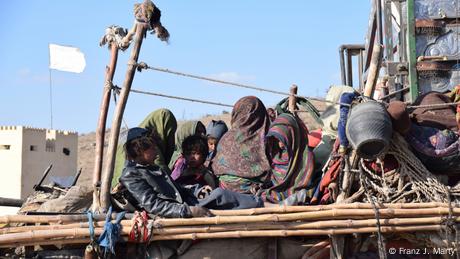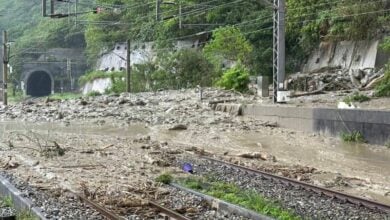Afghanistan: How a remote border crossing allows nomads to travel

Angoor Ada lies on an arid high plateau in the southeastern Afghan province of Paktika, one of the many backwaters of Afghanistan. The area would not be of much importance, if it weren’t connected to the border with Pakistan.
The border crosses near the edge of the long-stretched plateau, where the Pakistani tribal area of Waziristan begins.
After arriving in Angoor Ada, one encounters two long lines – one with lorries, and the other with tractors, waiting to cross the border gate. On both sides are parking lots, with even more trucks and tractors.
The small crowds in some places are not very orderly, however, the situation is much better here than what one sees at the main Afghan-Pakistani border crossings in Spin Boldak, in the southern Afghan province of Kandahar, and in Torkham, in the eastern Afghan province of Nangarhar.
Taliban’s border management
The relative order makes it easy for the Taliban to manage the border area. This is in contrast to the Taliban’s occasional use of force in Torkham.
Muhammad Said Mir, known as Haji Mullah, is in charge of the border crossing in Angoor Ada. He told DW that the crossing was closed when the Taliban captured it in mid-August. “But we swiftly reopened it for traffic from both sides,” he said.
“We have even increased traffic from about 40 trucks going into Pakistan each day to now up to 220,” he added.
Data shared by a Pakistani official on Twitter, however, indicated though that between November 11 and 20, the number of vehicles having entered Pakistan via Afghanistan was around 80 per day.
The vehicles coming from the Pakistani side to Afghanistan is much lower, but Mullah insists that 100 to 150 trucks enter Angoor Ada every day.
The Angoor Ada border, thus, provides a lifeline to Afghan traders.
While Kandahar’s famous pomegranates rot at the closed Spin Boldak crossing, many merchants manage to export fresh fruit through Angoor Ada.
Crucial for nomads
For Afghans who want to leave for Pakistan, Angoor Ada is not the solution.
“Only people with an ID card from Waziristan (Pakistan) are allowed to cross the Angoor Ada border into Pakistan,” Mullah said.
Despite limitations, the border crossing is crucial for the Kuchis, the nomads who have roamed around the region for centuries.
They spend summer in Afghanistan and winter in Pakistan’s relatively warmer areas. These Kuchis, like members of Pashtun tribes inhabiting areas on both sides of the border, possess official documents from both Afghanistan and Pakistan. This allows them to continue their regular migration through Angoor Ada.
Like other Afghans, some Kuchis wait in line with their tractors, carrying their belongings.
Some of them told DW that crossing the border under the Taliban is easier than under the former Afghan government. But some Kuchis disagree.
Kuchis also say that the border crossing can take between a few days and a couple of months. They complain that some people get preferential treatment due to their personal connections with officials, or that they pay bribes.
A land without borders
There are no systematic controls in place at Afghanistan’s border crossings. At the Angoor Ada crossing, several vehicles and people enter Afghanistan without any check.
The Taliban lack the means to check all vehicles and persons thoroughly. Out of the handful of pedestrians who cross the border, several have no ID cards with them but still manage to enter the country.
Tribesmen whose homeland straddles both sides of the border don’t recognize the Afghanistan-Pakistan border; they have crisscrossed it without papers for centuries. This was also a major problem for the US to track the movement of militants between Afghanistan and Pakistan.
Irrespective of who is in power in Afghanistan, borders with Pakistan are difficult to manage.
Edited by: Shamil Shams
SOURCE: DW News








